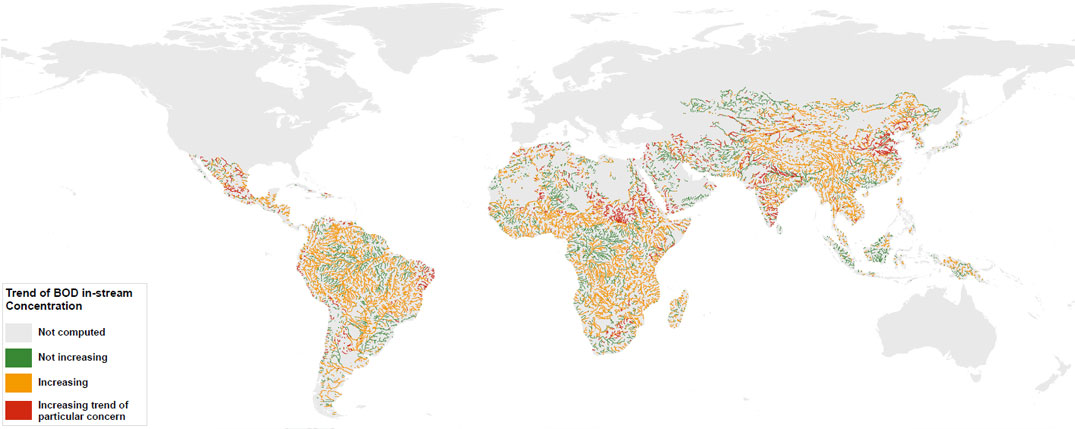Water contaminants of emerging concern include certain human and veterinary pharmaceuticals, personal care products, insect repellents, antimicrobial disinfectants, flame retardants, detergent metabolites, microplastics and manufactured nanomaterials (‘nanoparticles’) (Figure 9.13; Kolpin et al. 2002; UNESCO 2016; Yuan et al. 2018). The United States Geological Survey detected such contaminants in a majority of sampled streams in the United States of America (Annex 9-1; Kolpin et al. 2002). They also were detected in all pan-European seas, as well as groundwater (Sui et al. 2015; Corada-Fernández et al. 2017). Used in fire retardants, oil and water repellents, furniture, waterproof clothes, takeaway containers and non-stick cookware, poly- and perfluoroalkyl substances (PFAS) were found in water systems serving 16 million people in 33 states in the United States of America between 2013 and 2015 (INTJ Input 2017). Conventional wastewater treatment is not effective in removing most of these contaminants from domestic and industrial wastewaters.

Many are endocrine-disrupting chemicals (EDCs), attributed partly to wastewater treatment plant overflows, particularly those with combined sewer systems. Being found in sitespecific studies in Europe, the Asia and the Pacific region, Canada and the United States of America (Annex 9-1; Sui et al. 2015), their long-term human health impacts include fetal underdevelopment, child neurodevelopment and male infertility (Meeker 2012).

Micro- and nanoplastics (manufactured nanomaterials) resulting from microplastics in cosmetics, fragmentation of large plastic waste, tyre wear particles and laundering of synthetically based clothes are increasingly affecting freshwater and marine ecosystems (Annex 9-1; Horton et al. 2017). Of the 275 million (metric) tons of plastic waste generated by 192 countries in 2010, an estimated 4.8-12.7 million tons ended up in the oceans because of inadequate solid waste management. They are found worldwide in fresh and ocean waters, river and delta sediments, and in the stomachs of organisms ranging from zooplankton to whales (UNEP 2016g). Microplastics also can contain and absorb toxic chemicals. Electronic wastes also are of increasing concern because of their widespread abundance and unknown risks to surface- and groundwater quality.